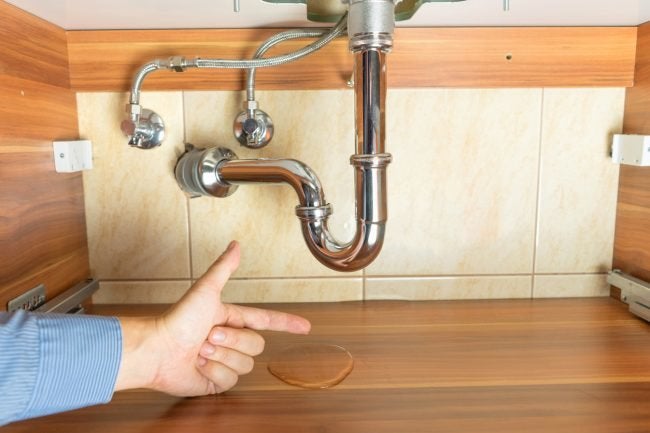Overview To Water Leakage Discovery In Your Home
Overview To Water Leakage Discovery In Your Home
Blog Article
How do you really feel in relation to Finding hidden leaks?

Early discovery of dripping water lines can alleviate a prospective catastrophe. Some small water leaks might not be visible.
1. Examine the Water Meter
Every home has a water meter. Inspecting it is a surefire manner in which assists you discover leakages. For beginners, switch off all the water sources. Ensure no one will purge, use the tap, shower, run the cleaning machine or dishwashing machine. From there, go to the meter as well as watch if it will transform. Since no one is utilizing it, there must be no movements. That suggests a fast-moving leakage if it moves. If you spot no modifications, wait an hour or two and also check back again. This implies you may have a sluggish leakage that can also be underground.
2. Examine Water Intake
Analyze your water costs and also track your water intake. As the one paying it, you should see if there are any kind of disparities. If you spot sudden changes, despite your consumption being the same, it means that you have leaks in your plumbing system. Bear in mind, your water costs need to drop under the exact same variety each month. A sudden spike in your costs indicates a fast-moving leak.
A steady rise every month, even with the very same routines, shows you have a slow leakage that's likewise slowly intensifying. Call a plumber to thoroughly examine your property, specifically if you feel a cozy area on your flooring with piping underneath.
3. Do a Food Coloring Examination
30% comes from toilets when it comes to water usage. Test to see if they are running appropriately. Drop flecks of food color in the container and wait 10 mins. There's a leak in between the storage tank and also bowl if the shade in some way infiltrates your bowl throughout that time without flushing.
4. Asses Exterior Lines
Don't fail to remember to examine your exterior water lines also. Should water seep out of the connection, you have a loosened rubber gasket. One little leakage can waste lots of water and also increase your water costs.
5. Examine the circumstance as well as check
House owners must make it a habit to check under the sink counters and also also inside closets for any kind of bad odor or mold and mildew development. These 2 red flags suggest a leak so prompt attention is needed. Doing regular assessments, also bi-annually, can save you from a major problem.
Examine for stainings as well as compromising as the majority of devices as well as pipelines have a life span. If you suspect dripping water lines in your plumbing system, don't wait for it to intensify.
Early detection of leaking water lines can reduce a possible disaster. Some little water leaks might not be visible. Examining it is a surefire means that helps you find leakages. One small leakage can waste heaps of water as well as increase your water bill.
If you presume leaking water lines in your plumbing system, do not wait for it to escalate.
WARNING SIGNS OF WATER LEAKAGE BEHIND THE WALL
PERSISTENT MUSTY ODORS
As water slowly drips from a leaky pipe inside the wall, flooring and sheetrock stay damp and develop an odor similar to wet cardboard. It generates a musty smell that can help you find hidden leaks.
MOLD IN UNUSUAL AREAS
Mold usually grows in wet areas like kitchens, baths and laundry rooms. If you spot the stuff on walls or baseboards in other rooms of the house, it’s a good indicator of undetected water leaks.
STAINS THAT GROW
When mold thrives around a leaky pipe, it sometimes takes hold on the inside surface of the affected wall. A growing stain on otherwise clean sheetrock is often your sign of a hidden plumbing problem.
PEELING OR BUBBLING WALLPAPER / PAINT
This clue is easy to miss in rooms that don’t get much use. When you see wallpaper separating along seams or paint bubbling or flaking off the wall, blame sheetrock that stays wet because of an undetected leak.
BUCKLED CEILINGS AND STAINED FLOORS
If ceilings or floors in bathrooms, kitchens or laundry areas develop structural problems, don’t rule out constant damp inside the walls. Wet sheetrock can affect adjacent framing, flooring and ceilings.
https://www.servicemasterbyzaba.com/blog/how-to-detect-water-leakage-in-walls/

I stumbled upon that blog entry about Finding hidden leaks while looking around the internet. Loved our write-up? Please share it. Let another person discover it. Thanks for going through it.
Report this page